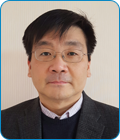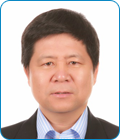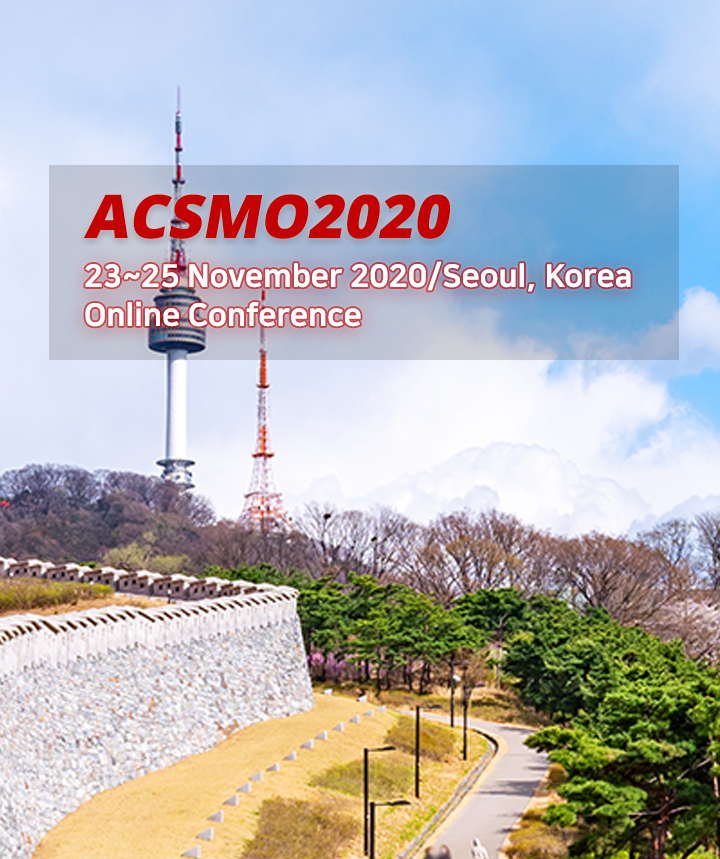Plenary Lectures
 |
Prof. Jongsoo Lee Yonsei University, Korea Role of Machine Learning and Deep Learning in Multi-Physics Engineering Design and Optimization Biography VOD Biography
Jongsoo Lee received B.S. and M.S. in Mechanical Engineering at Yonsei University, Seoul, Korea in 1988 and 1990, respectively and Ph.D. in Mechanical Engineering at Rensselaer Polytechnic Institute, Troy, NY in 1996. After a research associate at Rensselaer Rotorcraft Technology Center, he has been a professor of Mechanical Engineering at Yonsei University. His research interests include multi-disciplinary design optimization (MDO), reliability-based robust engineering design, prognostics and health management (PHM) and artificial intelligence & machine learning with applications to structures, fatigue/durability, lifetime prediction, flow induced noise and vibration problems.
Abstract
The plenary lecture gets started with the brief review of 0D data-driven evolutionary and soft computing techniques in the field of multi-physics engineering optimization. In machine learning and deep learning sections, a number of 1D data, 2D data and 3D data-driven analysis and design applications using convolutional autoencoder (CAE), long short term memory, Bayesian intelligence, reinforcement learning, artificial immune system and more are discussed in the context of structural and multidisciplinary optimization (SMO) and prognostics and health management (PHM) with additional suggestions of the next perspectives. |
 |
Prof. Shutian Liu Dalian University of Technology, China AM-Oriented Topology Optimization for Manufacture-ready Design of Advanced Structures and Materials Biography VOD Biography
Dr. Shutian Liu obtained his Doctorate degree from Dalian university of technology in 1994. Since then, he worked at the Department of Engineering Mechanics of Dalian University of Technology (DUT) and the State Key Laboratory of Structural Analysis for Industrial Equipment as a professor and the director of the Research Institute of Aircraft Lightweight Structure (RIALS) in Dalian university of technology. His main research is focused on Engineering Mechanics, Solid Mechanics, Computational Materials and mechanics. A series of important achievements have been accomplished in structural and multidisciplinary optimization, design for additive manufacturing, mechanics in manufacturing process, design of composite and metamaterials, ultralight materials and structures, aerospace mechanics and engineering, etc. More than 230 papers have been published and over 20 invention patents have been authorized. Dr. Liu is currently an executive member of the Chinese Society for Composite Materials, the director of the Professional Committee of Design and Mechanics of Composite Materials, standing member of China Additive Manufacturing Branch Committee (CAMBC) and executive member of Asian Structural and Multidisciplinary Optimization Society (ASMOS).
Abstract
Topology optimization is considered as a promising design method for generating innovative design candidates, and additive manufacturing (AM) is an advance manufacturing technology which has minimal limitations on the shape and complexity of the design. The combination of the topology optimization and additive manufacturing is currently evolving towards new materials, higher precision and larger build sizes. Thus, development of the additive manufacturing oriented topology optimization methods to obtain close-to-optimal and friendly-to-manufacture design solutions has been a hot topic in optimization areas. In this presentation, three aspects are discussed to address the issues of topology optimization for AM.(1) Even though additive manufacturing opens the possibility to overcome limits currently imposed by conventional manufacturing techniques, new restrictions emerge due to the diverse and intricate AM processes. In order to get a tradeoff between the design manufacturability and elegance, we addressed the manufacturability constraints for design under additive manufacturing processes, including connectivity constraint, length-scale control, overhang constraint and material anisotropy. These manufacturing constraints are successfully converted into mathematical formulations and added in the topology optimization design problems. As a conclusion, an end-to-end design process is established. (2) After ensuring a ready-to-manufacture design, to make the most of design freedom released by additive manufacturing is another important topic. The extension of topology optimization from one scale to multi-scale is one way to pursue this goal. In this direction, two new design methods for the shell-infill structures and quasi-periodic cellular structures will be given in this presentation. In addition, the design of multifunctional structure is another typical way to take advantage of design space of AM. Also, several typical examples of our recent works will be presented in this part, such as the design of vibration absorption structure, thermal-protection structure, antenna structure, left-hand material and so on. Finally, these works illustrate that AM can make near-full use of the freedom of topology optimization. (3) Some engineering applications in aerospace, including large space mirror, truss joint for spacecraft et. al. are presented. By using the topology optimization, some new and unexpected designs are obtained. Compared to the traditional designs, the new designs show great performance improvement. 3D printing shows a trial-manufacture of these new designs. |
 |
Prof. Masao Arakawa Kagawa University, Japan How to Design Heuristic Search Biography VOD Biography
Masao Arakawa earned his Bachelor of Engineering Degree in Mechanical Engineering from Waseda University in 1988 and his Master’s Degree in Mechanical Engineering from Waseda University in 1990. He also received his Doctor of Philosophy Degree in Mechanical Engineering from Waseda University in 1993. He is now a Professor in Faculty of Engineering and Design in Kagawa University.
Abstract
To solve engineering design problems by using optimization, I always think whether I can use optimality criteria method. If not, I wonder whether the problems have mixed variables or not. If not, I check whether they have potential possibility to have multi-peak or not. If not, I check how many design variables they have. Mixed variables, multi-peak and large scale of design variables are all possible chances to design heuristic search. In this lecture, I will briefly abstract basic part of heuristic search and how to get rid of problems that they have. |



